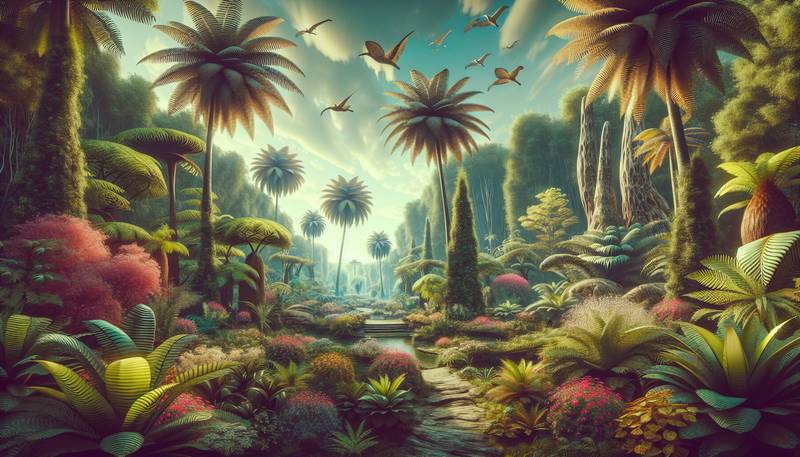Time Traveler's Flora: Growing Ancient Plants in Modern Times

Introduction: Where Past Meets PresentImagine plucking a fruit that hasn’t graced human hands for centuries, only to find out it pairs surprisingly well with today’s artisanal cheese. In a world obsessed with modernity, growing ancient plants is like hosting a dinner party where guests from the Stone Age and the Information Age happily mingle. So, grab your gardening gloves and time machine; we're heading back to the roots—literally.Why Bother with Ancient Flora?Before diving into your newfound horticultural hobby, it’s worth pondering: why grow plants from the past? Are you trying to impress your neighbors with your “extinct chic” garden? Or perhaps you're preparing for a post-apocalyptic survival scenario with the culinary edge? ★ Unique flavors: Think of the culinary masterpieces you could whip up! Forget about the mundane tomatoes—how about a Heirloom Grain or a rare fruit? ★ Biodiversity: Ancient plants bring back the essence of diversity that modern agriculture often overlooks. ★ Connection to history: Every plant has a story. It’s like being a plant detective, investigating the secret lives of your flora.Plants Worth the AdventureNow that you’re convinced that your backyard needs a dash of historical intrigue, here are some ancient plants that will have your neighbors wondering if you’ve become a wizard in the garden.- Amaranth: This ancient grain was a staple in Aztec diets. It’s gluten-free and full of protein—perfect for when the neighbors decide to throw a gluten-free potluck.
- Ka'i Alani Fruits: These beauties were all the rage in ancient Hawaiian societies. Fruit that sounds like it could be an exotic cocktail? Yes, please!
- Heritage Tomatoes: These are not your run-of-the-mill tomatoes. They're like the rebellious teenagers of the tomato world, flaunting their varied shapes and colors.
- Chickpeas: Known to have been cultivated in the Middle East thousands of years ago. Trendy today, but these legumes have been around longer than some civilizations!
How to Cultivate the PastGrowing ancient plants isn’t as simple as tossing some seeds in the ground and shouting 'Abracadabra!' (Although that would be fun too). Here's how to get started on your journey through time.1. Research the plants: Some ancient varieties might need specific conditions. It's a bit like dating: you really need to know what each plant is into.2. Prepare the soil: Good soil is essential. Think of it as the comfy couch where your plants will binge-watch the latest season of Photosynthesis.3. Planting: Follow the guidelines for each plant to determine the depth and spacing. Ignoring this could lead to what scientists call 'too many friends in one space,' which is a term that absolutely doesn’t exist, but it feels true when your tomatoes are fighting for sunlight.4. Watering and Care: Ancient plants may have unique watering needs. No one likes a dry spell—or a soggy bottom, for that matter.5. Harvesting: When the time comes, take pride in your yield. Remember, you've just harvested a piece of history that’s probably more interesting than your last vacation story.Historical Hiccups: Common ChallengesNavigating the waters of ancient horticulture can be a bumpy ride. Here are some potential speed bumps you might encounter:★ Pests: Insects don’t care about your plant’s cultural significance. They may just see a delicious buffet.★ Climate issues: Some ancient plants were used to very particular climates. If you’re growing a desert plant in a rainforest, it’s like trying to make a cat swim to catch a fish—just not going to happen.★ Seed availability: Finding seeds for rare plants can be more challenging than locating a needle in a haystack while blindfolded.Harvesting Time: A Fruitful LegacyOnce the season reaches its climax, you'll find yourself reaping not just fruits and vegetables but memories and stories that can be passed down through generations. Much like those family heirlooms you’re not sure you want but feel obligated to keep, your ancient plants will remind you of the roots of civilization—minus the dust. Now that you’ve embraced the ancient flora, you’re not only cultivating plants but also cultivating stories, laughter, and maybe a few strange looks from passersby. Welcome to the wild world of ancient gardening, where time truly does grow on trees.
|
|







